Let me put a pause real quick in my storytelling to let you know that last month I was finally able to float the last accessible segment I had left of the Cahaba. While my big trip took me from Irondale to Selma, there are three segments of the Cahaba north of Irondale. I completed the two lower sections last year independent of my trip. But that still left the very first segment listed on the Blueway Map. There’s even more of the Cahaba before this first segment, but it’s very rocky, contains some killer rapids, and is inaccessible most of the year due to lack of flow. There’s also no public boat launch.
I’ve had to wait a year and a half to boat this first stretch of river. It runs from Civitan Park in Trussville to White’s Chapel Road. As I’ve mentioned here before, the further north you go on the Cahaba, the rockier it is, but also, the more irregular the water levels. This stretch spends most of the year at a trickle. That is until these massive rain events we’re getting—more and more—dump incredible amounts of water into the river which spikes water levels to dangerous conditions for a moment before bottoming out again.
If you think that sounds chaotic and unsafe, well, you’d be right. We’re caught in a pretty vicious water cycle that only keeps getting worse. Part of this is caused by development and manicured landscape practices. Our cultural ideas surrounding the beauty and status of lawns contributes to a lot of problems for the river. Alabama used to be covered in magnificent parries made of a stunning array of blooms and grasses with roots that trailed deep into the soil. But our manufactured culture around lawns means we’re covering massive surface areas in grasses with short root systems. Longer roots allows for deeper absorption of water into the ground. Shorter roots mean the surrounding areas become quickly saturated and the water runs right off the surface and into storm drains instead of soaking into the ground and returning to the water table.
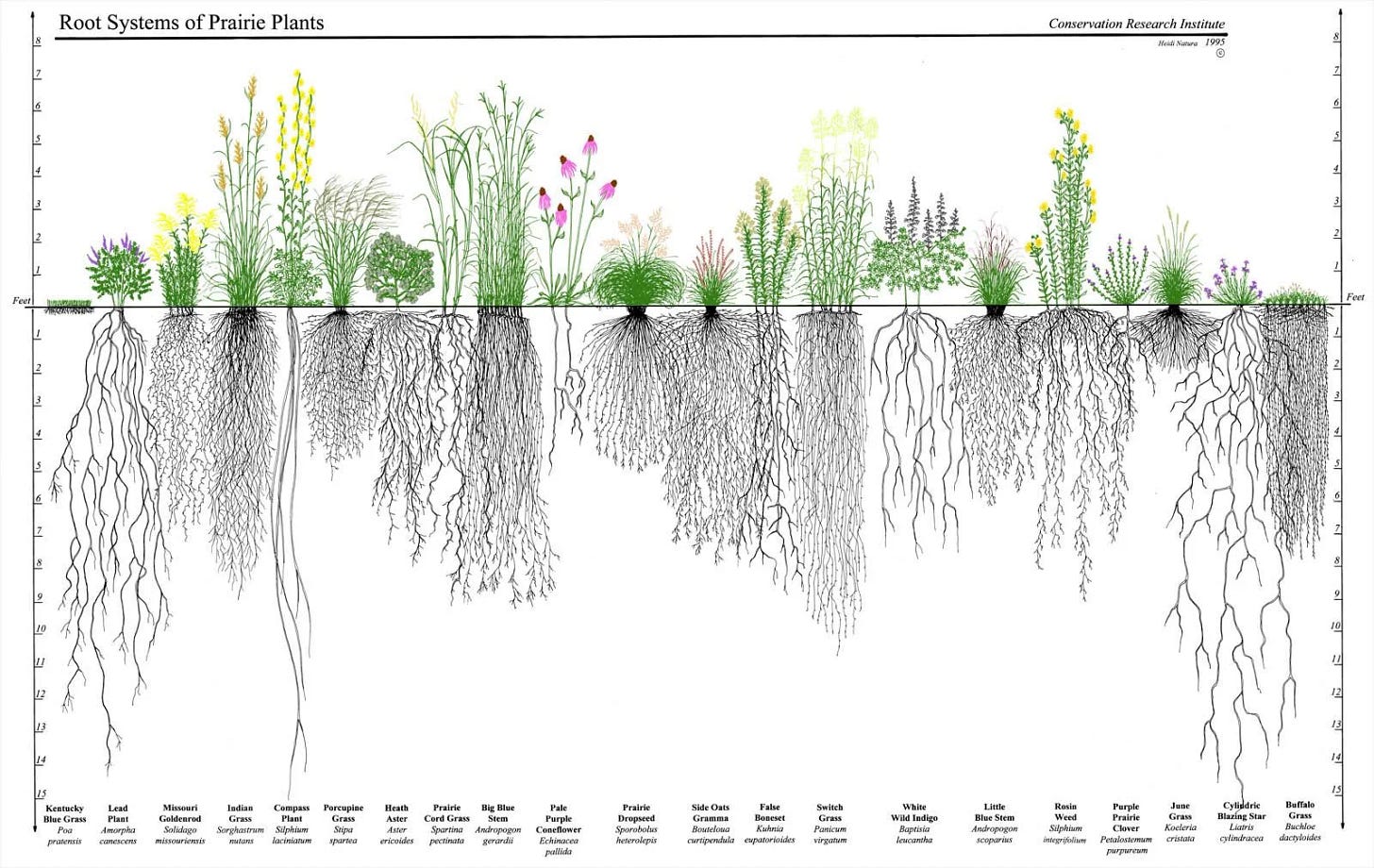
Alabama is one of the top 5 rainiest states averaging over 55 inches per year. And yet that water gushes straight into the Cahaba which dumps into the Alabama River and on directly into the Gulf of Mexico. And when you consider that our weather is influenced in a significant way by Gulf activity, the actions we take here at home circle back around to us ten-fold. More than that, the Gulf feeds into the Gulf Stream which jets all the way across the Atlantic Ocean.
Taking care of our water ways means making changes both on an individual and community-wide level. It means crafting and enforcing better policies for our water systems. It means developing better landscaping practices. Check out this Southern Exposure Film to understand just how wide-spread and dangerous these flooding events are. And the National Wildlife Federation has a great overview of the insidious history of lawns and their consequences if you’d like to learn more.
Because the flooded portion of this section of the river gets a little hairy at times, I wasn’t going to do this run alone. My buddy Wil Rainer from the Cahaba River Society had paddled this segment a few times before and was familiar with its tricky bits; so, we set out for a tandem early paddle in a canoe. The morning air had the first hint of false fall stirred up and fog hung low in shady patches.
The river was stirred up with sedimentation and roiling with e-coli and who knows what other bacteria and pollutants, but despite all that, I found myself turning around to Wil and commenting on how gorgeous things were. Moss and lichen-covered rock walls cradled us as we curved through the landscape. The banks paraded with big-leaf magnolias, sycamores, and more pawpaw trees than I’ve ever seen. I’ve never seen a pawpaw tree fruit in the wild either, but these banks were flush with them and shaping up with the rare and desirous fruit.
Much like avocados, pawpaws have a narrow window of ripeness. A quick Google said unripe fruit could be ripened in the fridge, so we gathered a couple. I followed the at-home ripening instructions dutifully—leave in the fridge for two weeks then take out and let finish at room temperature for a few days—and was rewarded with everything anyone has ever said about a pawpaw. They’re like a custardy cross between a banana and a mango: sweet and with a texture that reminded me almost of bread pudding. If you do happen to land your hands on some of these delicacies, don’t eat the skin or seeds as they are mildly toxic.
We took the first grouping of rapids without incident and were rewarded with a gorgeous waterfall meeting the river on its right bank. Its spring-fed flow was cool and refreshing as the day had started to heat up around us. And you better believe we made good use of wonder and slid down the waterfall’s side into the river below.
Not long after the waterfall we ran into the another set of rapids and here our good fortune ran out. The rough water seemed to go on forever and was exciting and a little bit harrowing. As we near the end of the run, I’m at the front of the boat thinking we’re doing great. Sure, a tad bit of water splashed over the bow, but not enough to make any difference. So, tell me why the next minute the I feel waves lap my back in time to a chorus of Wil hollering KEEP PADDLING! KEEP PADDLING!
I kept padding but the motion got harder as the water level around me rose. Round about that time I realized this was it, we’re going down. The boat swamped and sank beneath me, and I floated up just barely off my seat with my life jacket. Now at this point the water is to my chest, my paddle is parallel with my shoulders, gear is floating up and drifting off, and I’m just grabbing for whatever I can. My water bottle floats off, his water bottle starts to float off, and this whole time he’s STILL yelling KEEP PADDLING! KEEP PADDLING! Like: excuse me, sir. We’re sitting in the boat on the bottom of the river, and you want me to do what now?
But we laughed through the whole thing and set the boat to rights without issue, reclaiming all the gear in the process. Oh and shoutout to my waterproof camera bag. That thing was fully submerged under rushing water and held up like a champ.
We wrapped up our segment before lunch and both decided we were not done paddling for the day. Wil made a few calls, and we met up with Gordon Black, Randy Haddock, and Abby Bunn to take on the segment of the Cahaba that runs from Moon River down to Grant’s Mill. Overall, it was an amazing day with awesome people. I’m glad to finally have each portion of the Blueway Map complete. One of these days I’m going to make an excursion to find the source of the Cahaba, but that will have to wait for another day . . .
Civitan Park to Whites Chapel
Whites Chapel Gauge 250 cfs
7.5 miles
3 hours
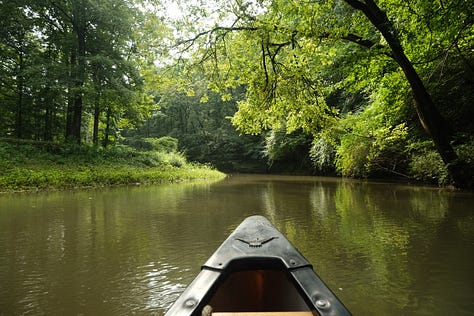
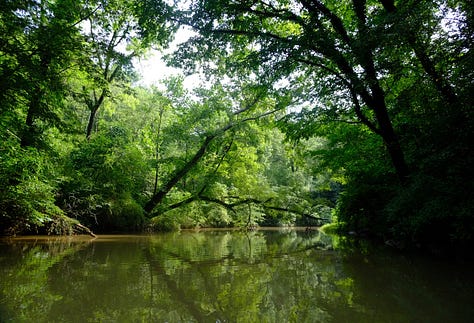
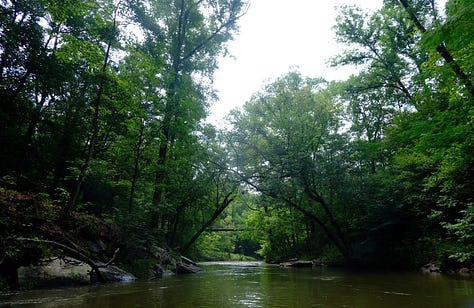
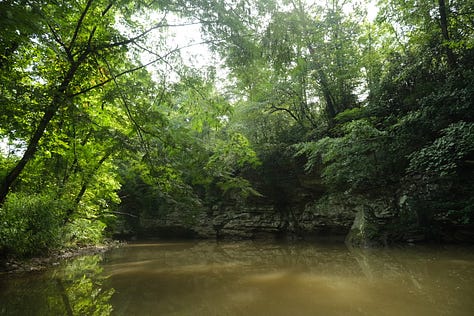
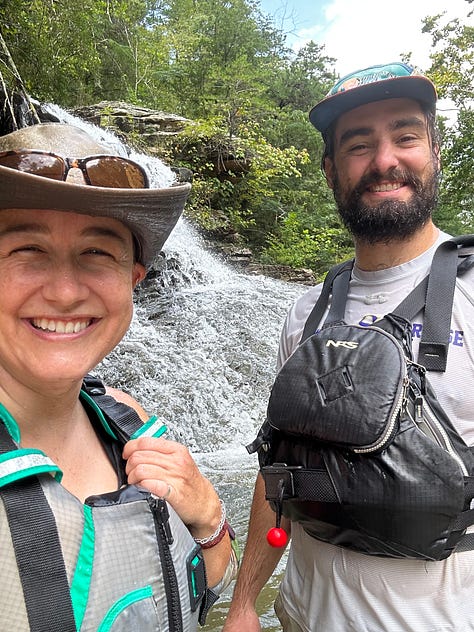
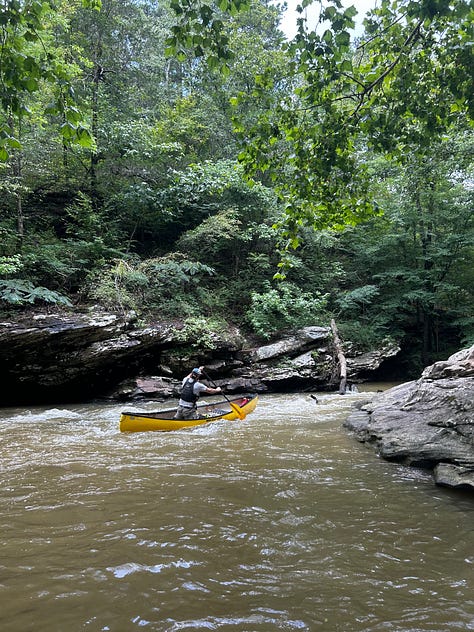
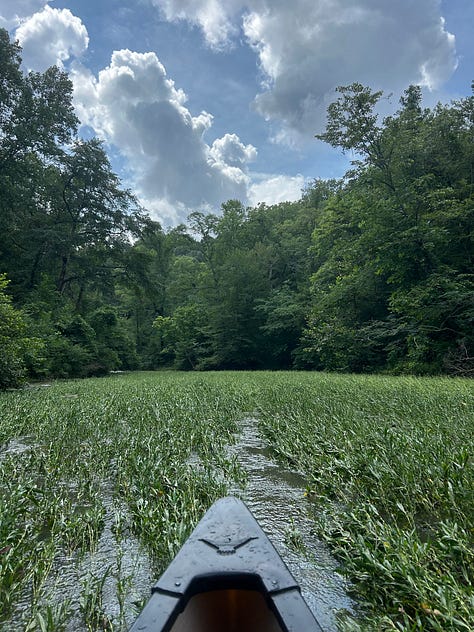
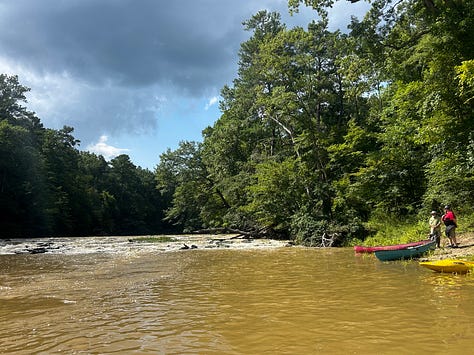
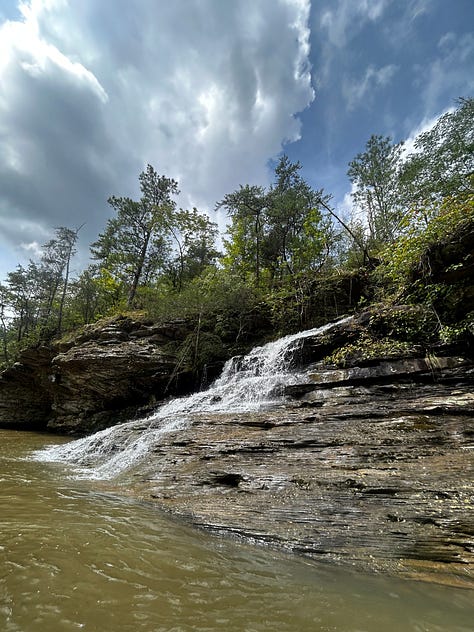

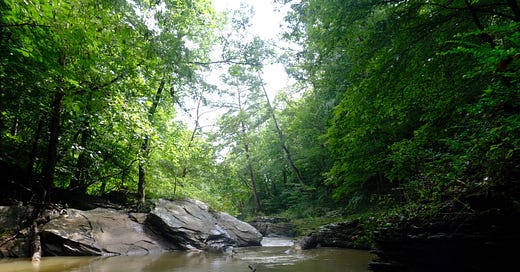



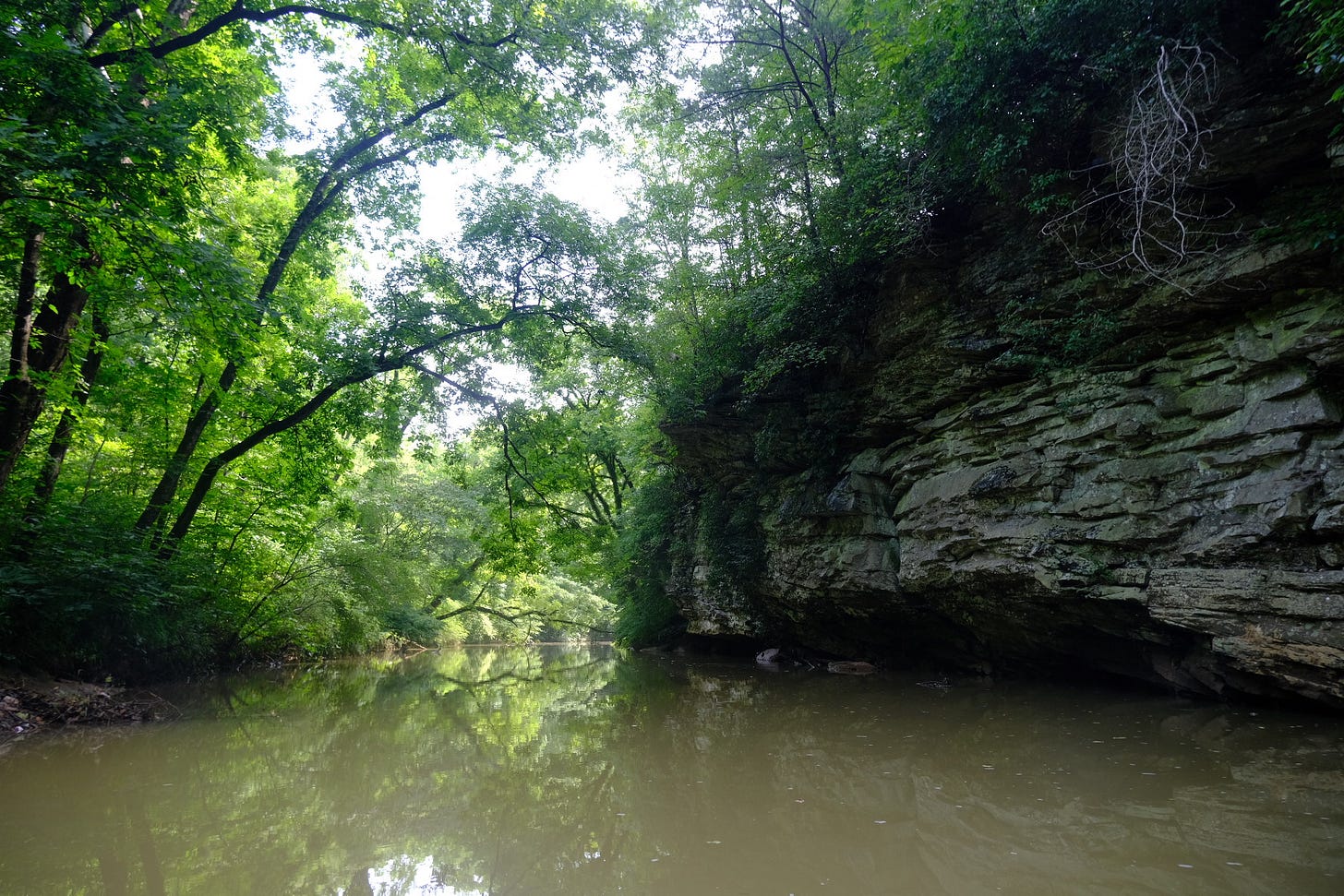
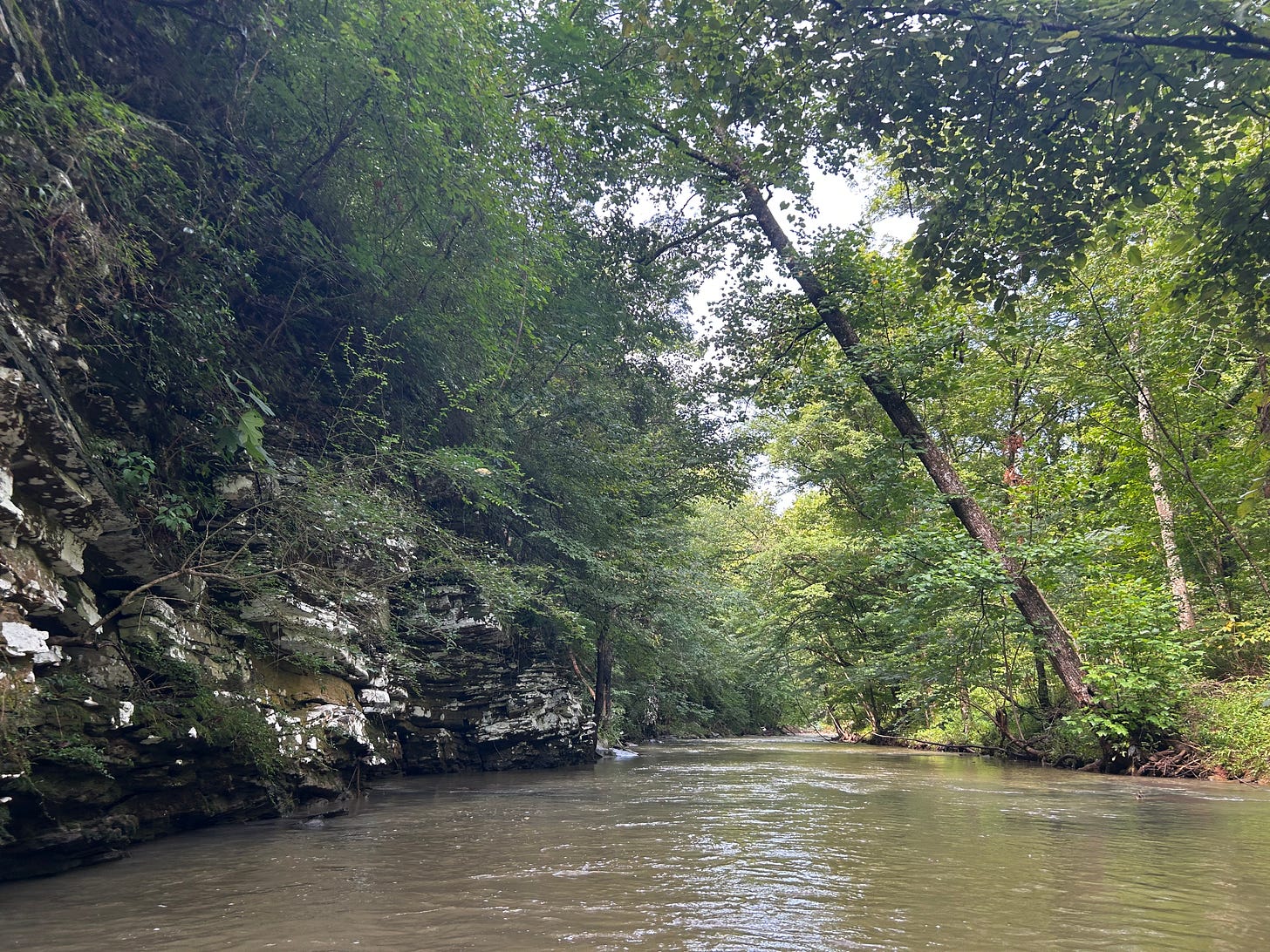
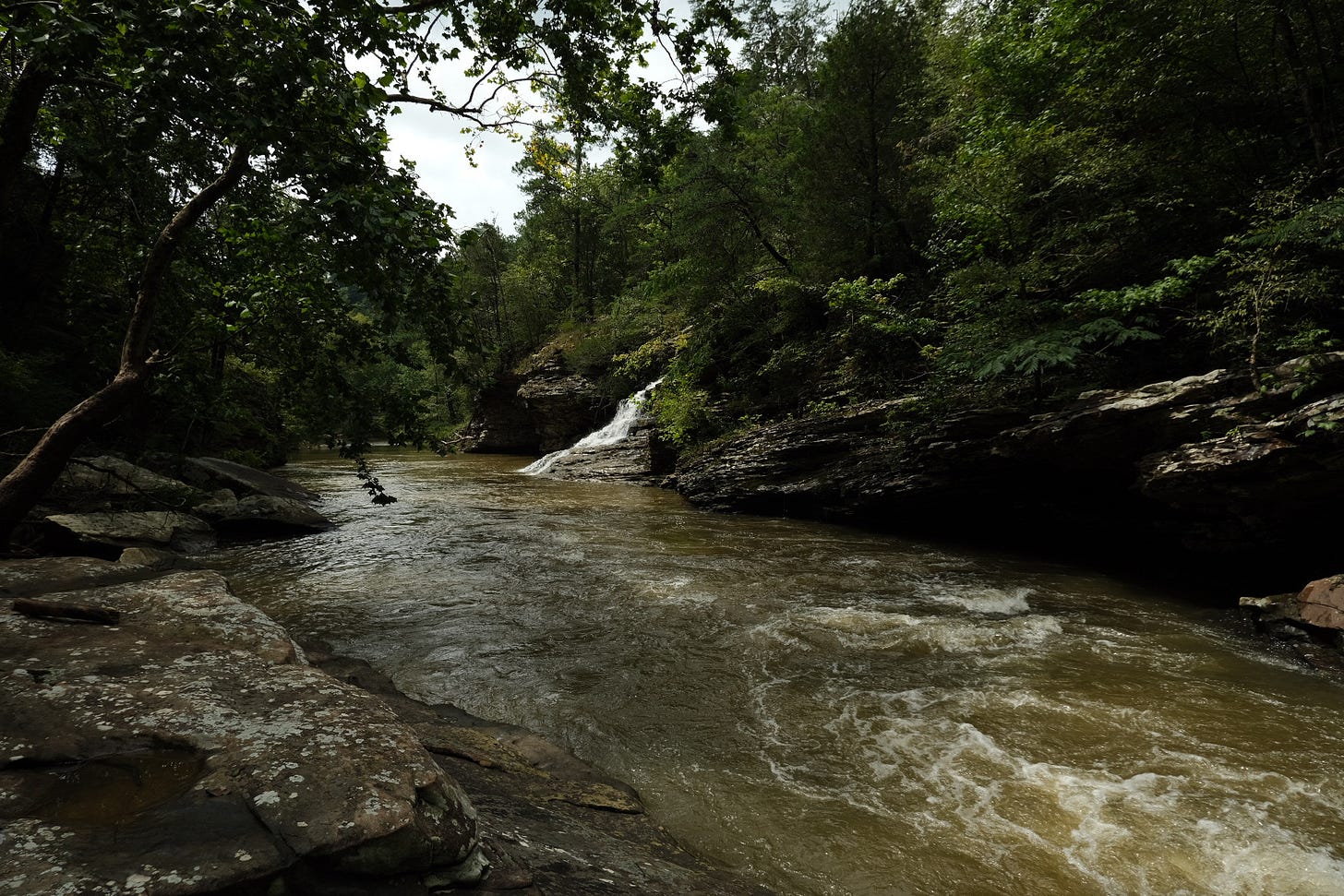
the best trips seem to be the ones that are slightly disastrous that end with a bunch of laughs. Fab read Halley, thanks for bringing us along your many journeys <3
What a beautiful river to run. The Cahaba. Thank you for doing this Substack.